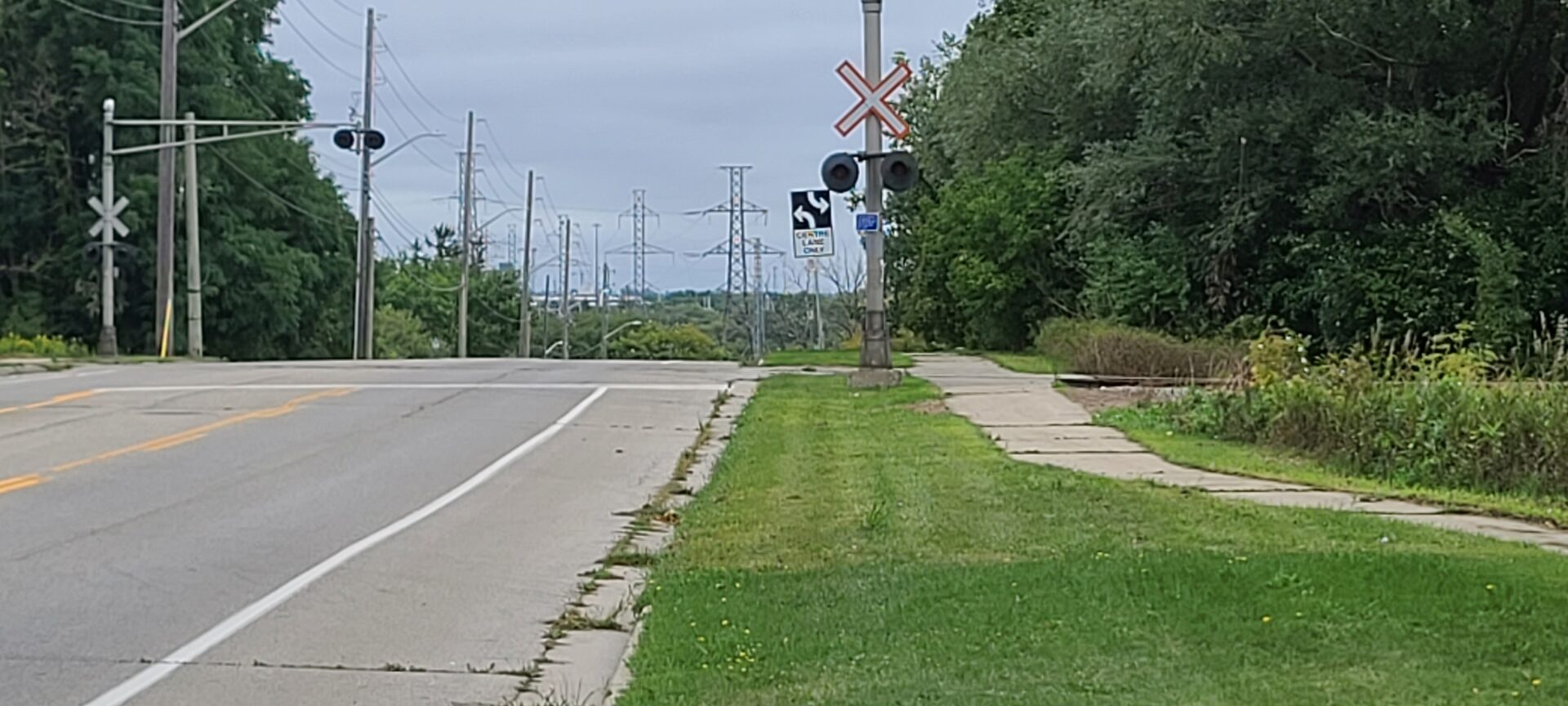Safe and Accessible Crossings

From this point, about 140m away, the bus stops aren’t visible at all. Though 140m may sound like a lot, it’s merely 11s away at 50km/h, or about 8s away at 65km/h.
When we think about transit and mobility, there are many aspects that we must consider other than just stop locations, bus frequency, and routes. Ease of getting to and from a stop must also be taken into consideration.
The location above is one that many residents have brought to my attention. People who have mobility needs are currently forced to take a large detour to reach the bus stop at the other side of the road. Without a curb cut, it is difficult or impossible to get across the street using mobility devices.
The hill leading up to this location is also an issue. It is difficult for drivers to see over it, so when people are able to cross, they are doing so unsafely. In Guelph, more than two people are injured per day in a collision on our streets[1]. We must strive to make our streets safer for all road users.
There are many residents living along Fife who have told me that they are appreciative of the traffic calming that occurred along their street in recent years. Specifically, the reduction from two lanes to one was highlighted as a major improvement, but many brought up to me that they still aren’t comfortable with the speeds along that section. Pedestrian crossings, especially those with islands, are a useful additional traffic calming measure.
This situation isn’t unique to Fife, I’ve heard similar concerns from many residents across Ward 4. For residents to choose alternative means of transportation, they must be able to do so safely and easily. When we make these changes and support alternative transportation, we gain additional benefits of making our communities safer and more livable.
[1] https://guelph.ca/wp-content/uploads/2016-2020CollisionReport.pdf